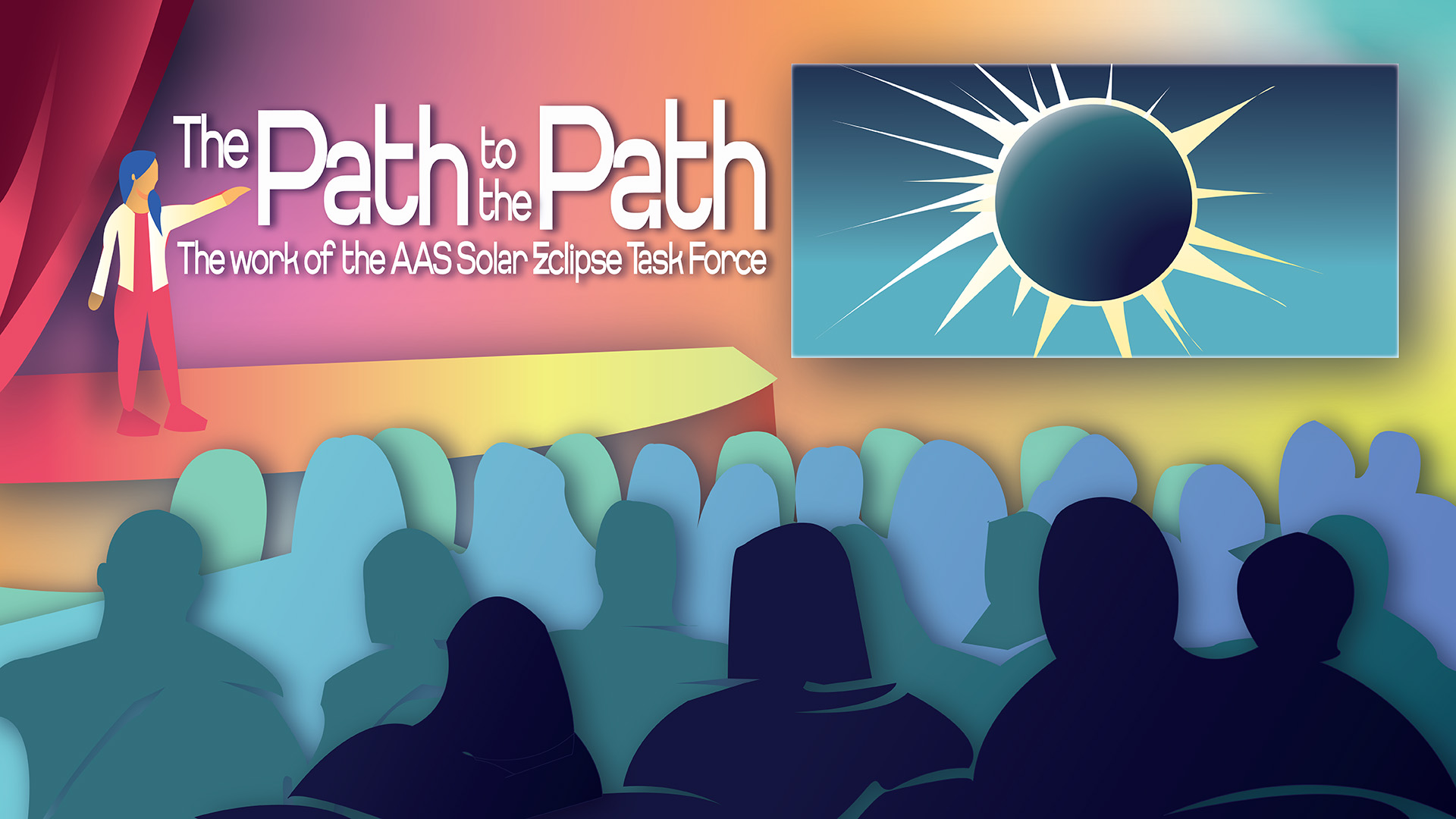AAS Releases Documentary "The Path to the Path" in Advance of the April 8th Total Solar Eclipse
In celebration of the work that the American Astronomical Society (AAS) Solar Eclipse Task Force has been doing for the past decade to prepare for the North American solar eclipses of 21 August 2017, 14 October 2023, and 8 April 2024, the AAS has released a 25-minute documentary entitled The Path to the Path — a reference to the path of the Moon’s dark shadow as it sweeps across Earth’s surface during a total solar eclipse.
“With the help of NASA, the National Science Foundation, the American Institute of Physics, and many other partners, a large group of engaged volunteers has worked tirelessly to coordinate outreach efforts across the US while sharing resources and ideas,” says Kevin Marvel, Executive Officer of the American Astronomical Society.

The dozens of volunteers comprise not only astronomers and other scientists, but also community organizers, artists, science educators, transportation experts, tourism leaders, members of the media, and dedicated eclipse chasers. The film documents the decade-long labor of love by task force organizers, members, and associates.
“Everyone on the Solar Eclipse Task Force is committed to the effort, and by the end of the effort will need to be committed,” jokes astronomer Rick Fienberg, Program Manager for the task force and one of its original members. Like many on the task force, Fienberg has willingly and eagerly put in hundreds of hours of unpaid work to prepare the public to enjoy the eclipses safely and to understand the celestial ballet that produces them. It’s been crazy-busy and exhausting at times, but he says it’s been worth it. “I feel like I am among friends and fellow enthusiasts who share many of the same motivations that I do.”
That sentiment is echoed by others featured in The Path to the Path, including Angela Speck, co-chair of the task force and a professor of physics and astronomy at the University of Texas, San Antonio. “At work, I spend most of my time interacting with other scientists,” says Speck. “On the task force, especially at the planning workshops we’ve convened, I’ve gotten to know lots of smart, interesting people in many other professions. We’ve learned so much from each other,” she adds, “and I expect that many of us will remain lifelong friends.”

The documentary was the brainchild of Debra Ross, who joined Speck as co-chair of the task force in 2022 after having worked for years as a community leader for Rochester, New York’s solar eclipse task force.
“When I came on board as co-chair, I was amazed at the depth of commitment that had led this group to such astonishing accomplishments over the past decade, all with volunteer effort,” says Ross. “This is an incredibly bonded group. But I also realized that the story was about to end, because there are no more major solar eclipses in the US for 21 years. So we wanted to find a way to tell the story of the past decade, both to help inspire those who are about to experience the 2024 eclipse, and also to thank all of the people who worked so hard to make it a success.”
Fortunately, Ross’s 22-year-old daughter Ella is a filmmaker and multimedia editor; Ella had started the Ross family on their eclipse journey when she was 16 years old by insisting that they travel from Rochester to Missouri to be in the path of totality for the 2017 “Great American” solar eclipse. The two witnessed the eclipse from Kimmswick, Missouri; Debra went in a skeptic but came out on fire to help Rochester prepare for the opportunity presented by being in the path of the 2024 eclipse.
"For the 2017 eclipse, there was a group of people making sure communities were prepared. And this time, they've been doing it again," said Ella Ross. "And let me tell you, they are a fascinating bunch."
The task force brought Ella to their most recent national planning workshop to conduct interviews with dozens of attendees who had been instrumental in the effort. The Path to the Path tells the story in a format that the public will appreciate and also serves as inspiration for the future leaders who will be coordinating preparations for the 12 August 2045 coast-to-coast US eclipse.
“The American Astronomical Society is happy to have played a small part in helping bring people together through our Solar Eclipse Task Force and very much thanks everyone who has been involved for working together and achieving so much,” says Marvel. “We look forward to the April 8th eclipse and hope all Americans will have an opportunity to connect with the cosmos as the Moon covers the disk of the Sun.”
The Path to the Path can be viewed at https://thepathtothepath.org. It is available for free noncommercial use by those preparing for the April 8th solar eclipse.
Contacts
Images
https://aas.org/sites/default/files/2024-03/ThePathtothePath_0.png (6 MB)
Caption: Artwork created to help promote The Path to the Path, for example, via social media.
Credit: Aileen Connorton
https://aas.org/sites/default/files/2024-03/Angela_Speck_Kate_Russo_P2tP.png (2 MB)
Caption: Screen grabs from The Path to the Path. Left: Angela Speck, astrophysicist and co-chair of the AAS Solar Eclipse Task Force. Right: Kate Russo, a psychologist who studies and writes about people's physical and emotional reactions to total solar eclipses.
Credit: American Astronomical Society
About the AAS
The American Astronomical Society (AAS), established in 1899, is a major international organization of professional astronomers, astronomy educators, and amateur astronomers. Its membership of approximately 8,000 also includes physicists, geologists, engineers, and others whose interests lie within the broad spectrum of subjects now comprising the astronomical sciences. The mission of the AAS is to enhance and share humanity’s scientific understanding of the universe as a diverse and inclusive astronomical community, which it achieves through publishing, meetings, science advocacy, education and outreach, and training and professional development.

